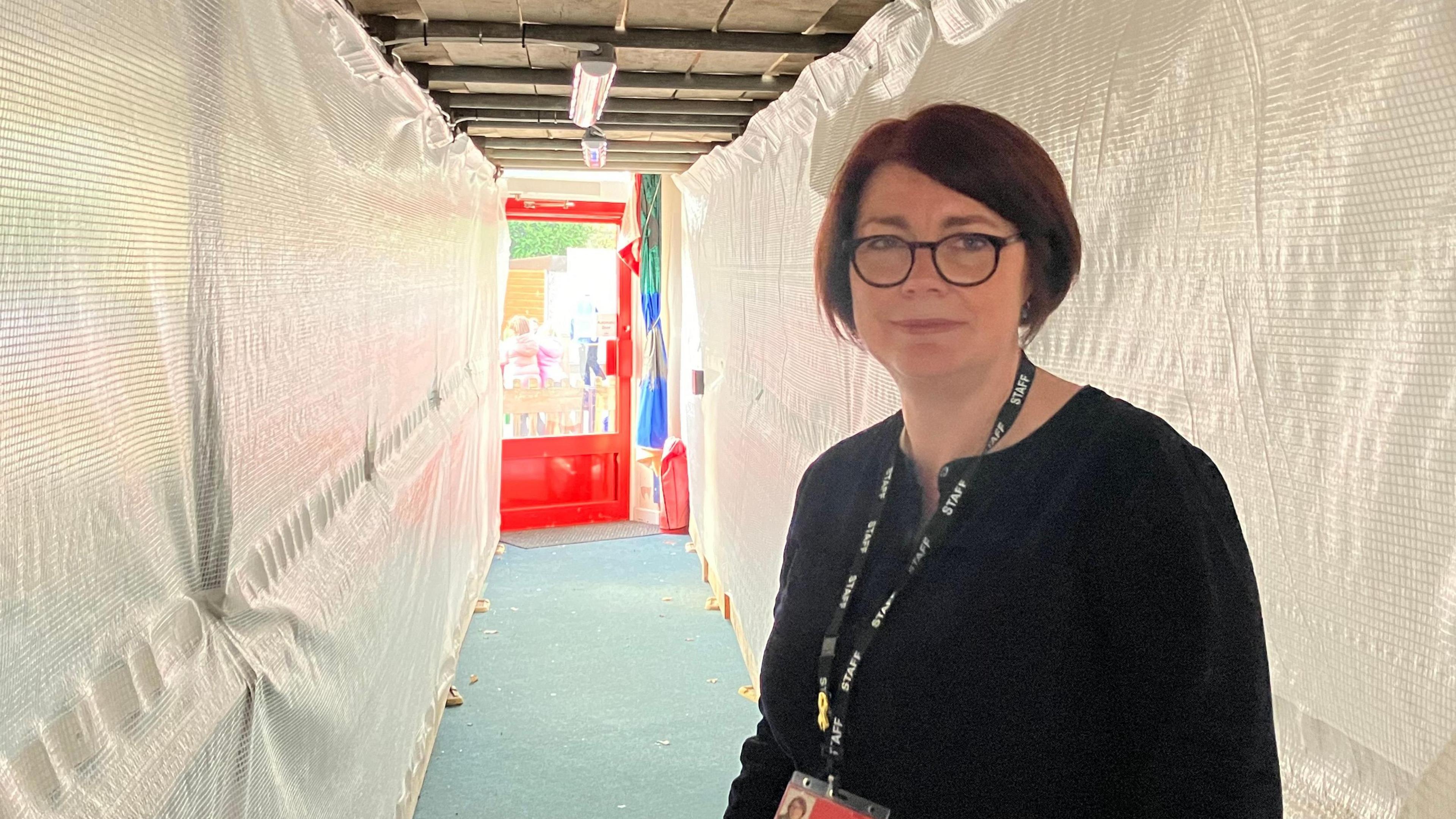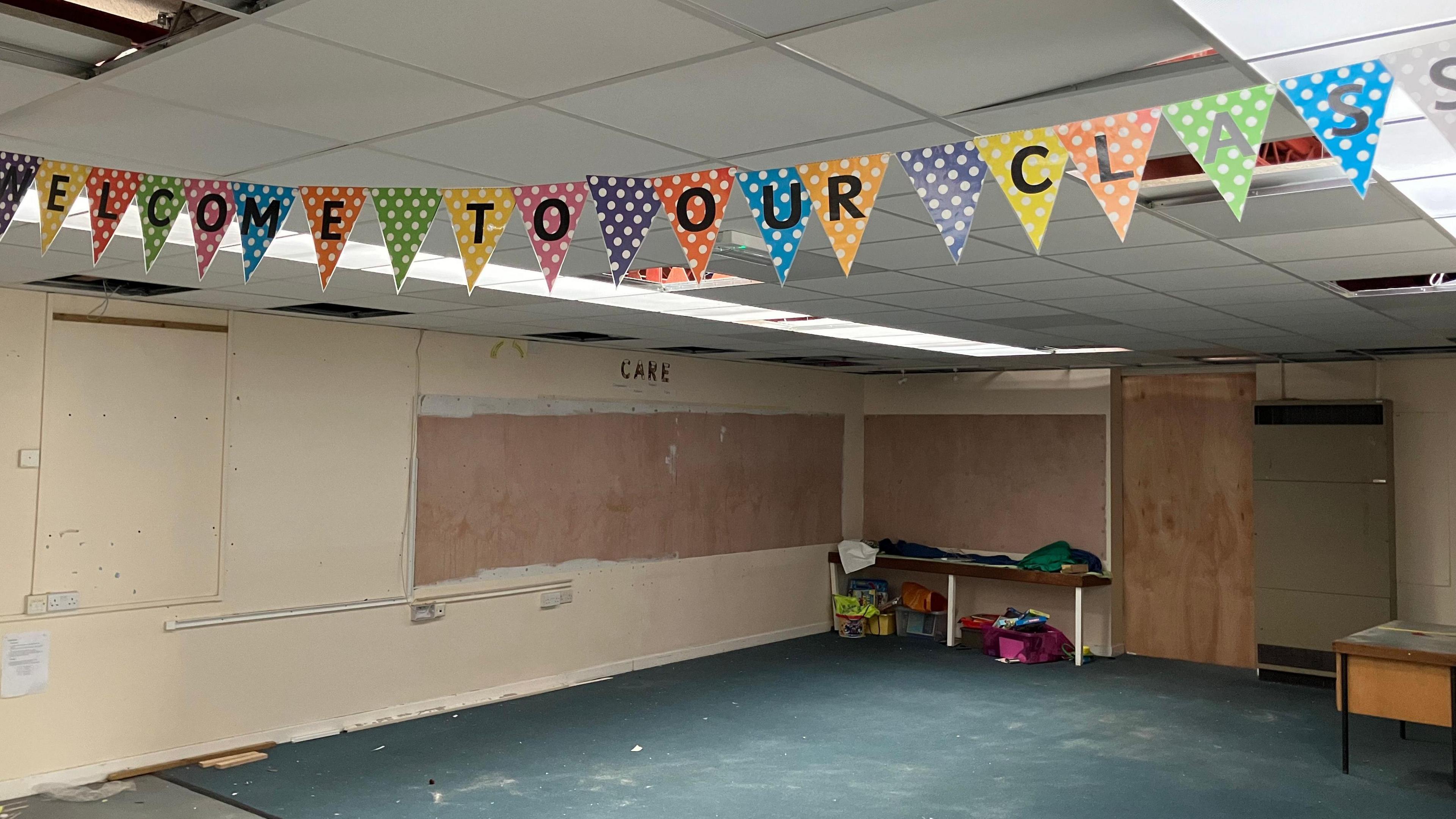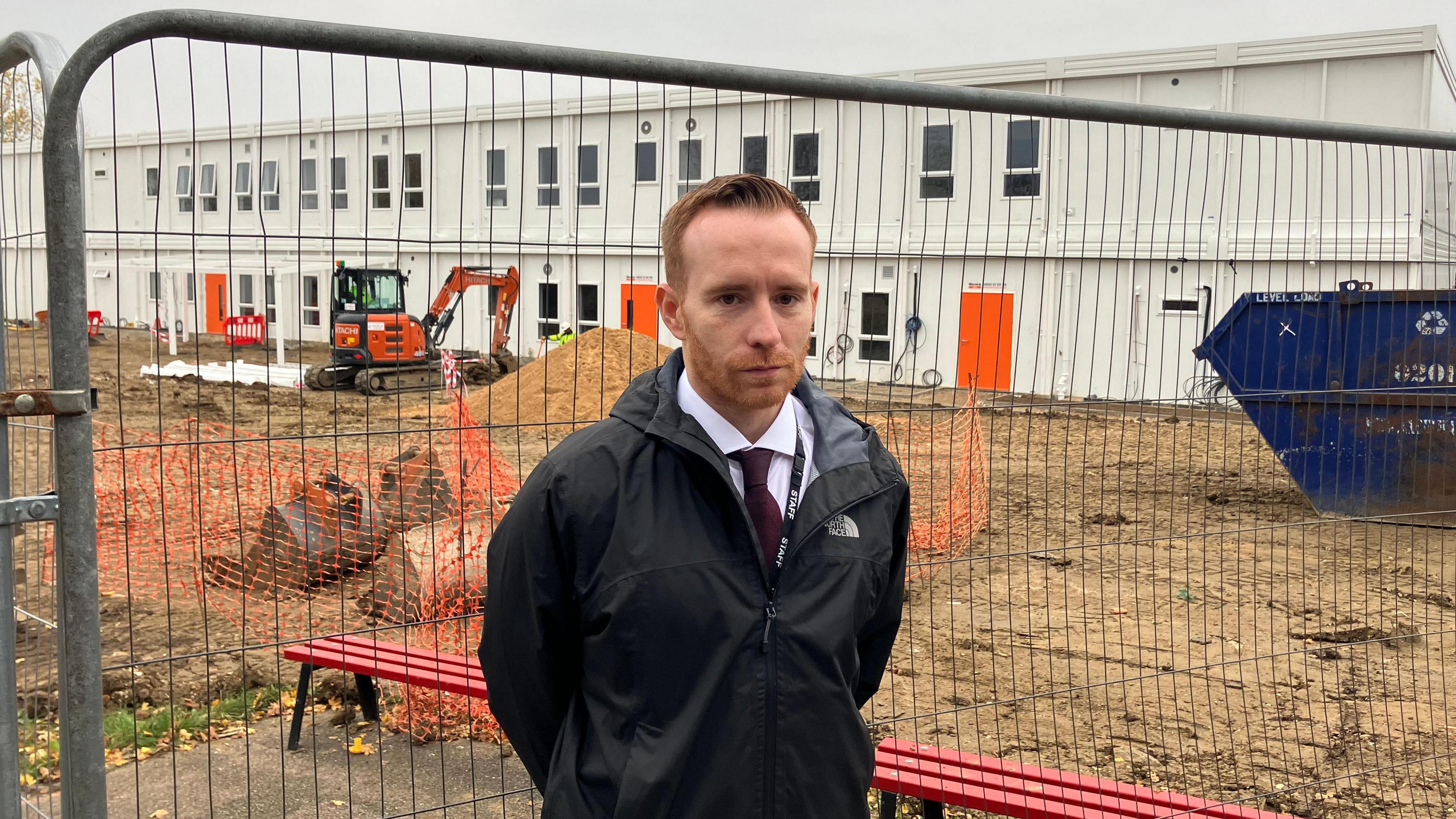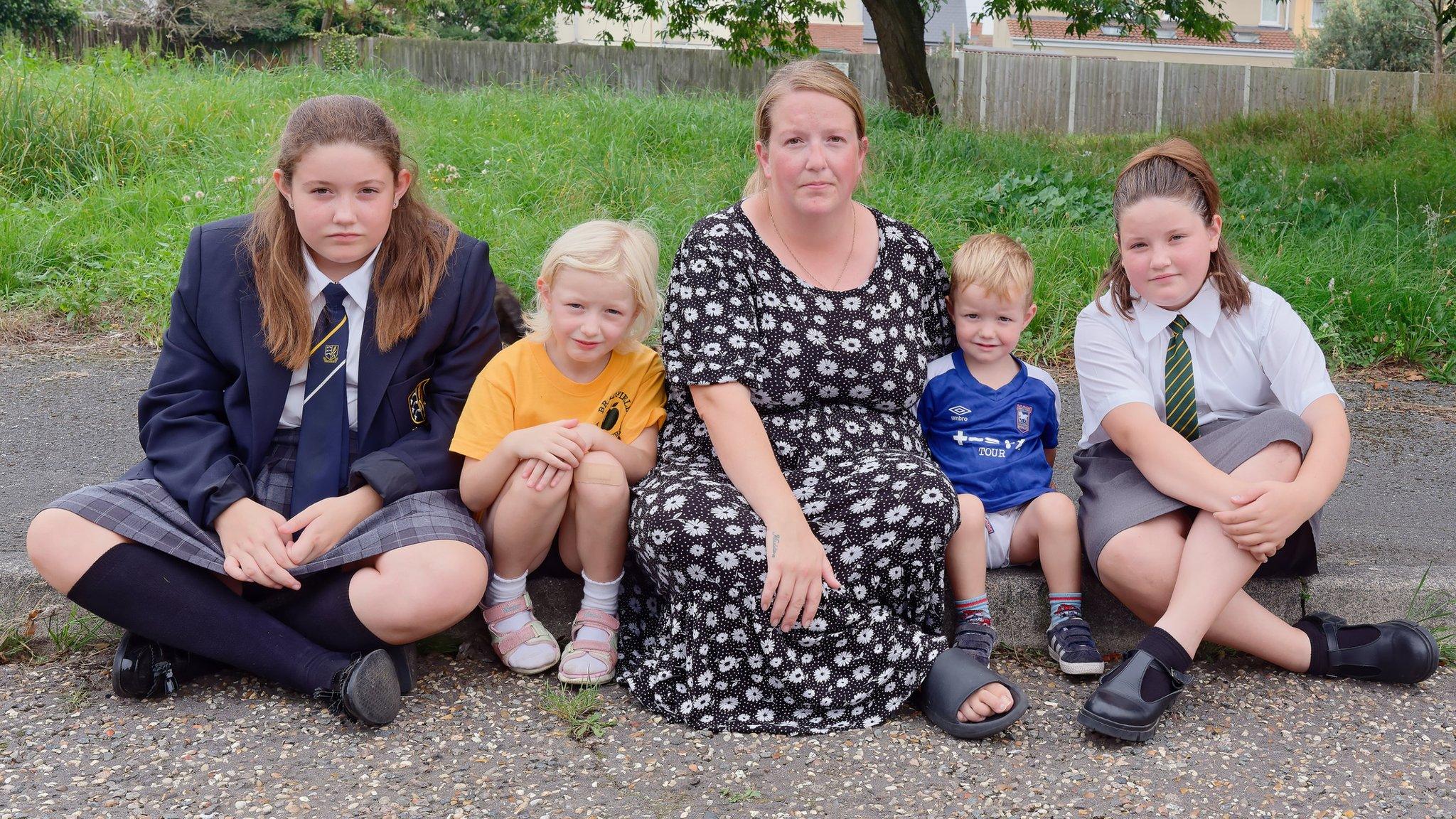'Raac crisis isn't over for us' - school leaders

Construction props and scaffolding are still a common sight at Becky Black's junior school
- Published
School leaders have said they are frustrated they are still dealing with the impact of the concrete crisis.
Surveys found 62 schools across Essex were built with collapse-prone reinforced autoclaved aerated concrete (Raac) - more than any other county in England.
More than a year since the safety concerns emerged, some heads have said they still unsure when new classrooms will be built.
The government has said work on the first 100 schools on its 518-strong rebuilding list will start in 2025. Essex County Council said it was confident no pupils were in "unsafe environments".
'We make things work'
Becky Black, headteacher at St Andrew’s Junior School in Hatfield Peverel, said: "I don’t think unless you’ve walked in the shoes of schools who have been impacted like this, anyone could believe how difficult it is.”
St Andrew's has temporary toilets and classrooms on the playground. When the Raac crisis hit, the school had to move to a wedding venue.
A second, temporary school will be built on a field, to allow enough room for the Raac-hit buildings to be demolished.
Mrs Black added: “As teachers, we’re problem solvers, and we make things work and when you make things work, people just take for granted that things are still happening and that the wheels haven’t fallen off and the children are still being educated.
“We are definitely having school rebuild meetings, there’s lots of measuring and surveys. We’re hoping we will have a new school by 2027/28."
Fifty-four schools in Essex, Southend and Thurrock are currently included in the government's school rebuilding programme, external - the highest number in the country.

An abandoned classroom at St Andrew's Junior School in Hatfield Peverel
Katherines Primary School in Harlow still has about 90 pupils being taught at other schools around the town. The children are transferred by coach each morning.
A new, temporary building will open in January, allowing all the year groups to come back together.
But Jo Coton, Chief Executive of the NET Academies Trust, which runs Katherines, warned the temporary classrooms could be in place for some time.
She said: "We really tried to champion having a new temporary building that was fit for purpose for a number of years to come, because we still have no timeline from the Department for Education on when a new building will be built."

Head of School, Julien Mealey, says a temporary school is nearly ready
Julien Mealey, the head, said everyone had pulled together to keep the school going.
"I've been privileged to be part of a school where something has happened that wasn't typical, but I've been able to see how the community and the children have adapted to it and been so positive at a tricky time," he said.
Tony Ball, a councillor with responsibility for education at Essex County Council, said: “All schools in Essex, both maintained and academies, affected by Raac have either had the Raac fully remediated or are in alternative classroom accommodation.
“There is long-term work to remove Raac from all school buildings, with schools either included in the school rebuilding programme or receiving grant funding from the Department for Education.
“Staff and student safety remains our top priority and we are confident no pupils in Essex are learning in unsafe environments due to Raac.”
A spokesperson for the Department for Education said Raac was commonly used as a building material between the 1950s and mid-1990s, and particularly in Essex, when a "huge amount of infrastructure" was built after World War Two.
They added: "As a result, the mass construction of buildings in these areas at that point in time is the reason why so many schools in Essex have been impacted by the presence of Raac in buildings."
St Andrew's Junior School in Hatfield Peverel might not be completely rebuilt until 2028.
Related topics
- Published10 September 2023

- Published15 September 2023

- Published5 September 2023
